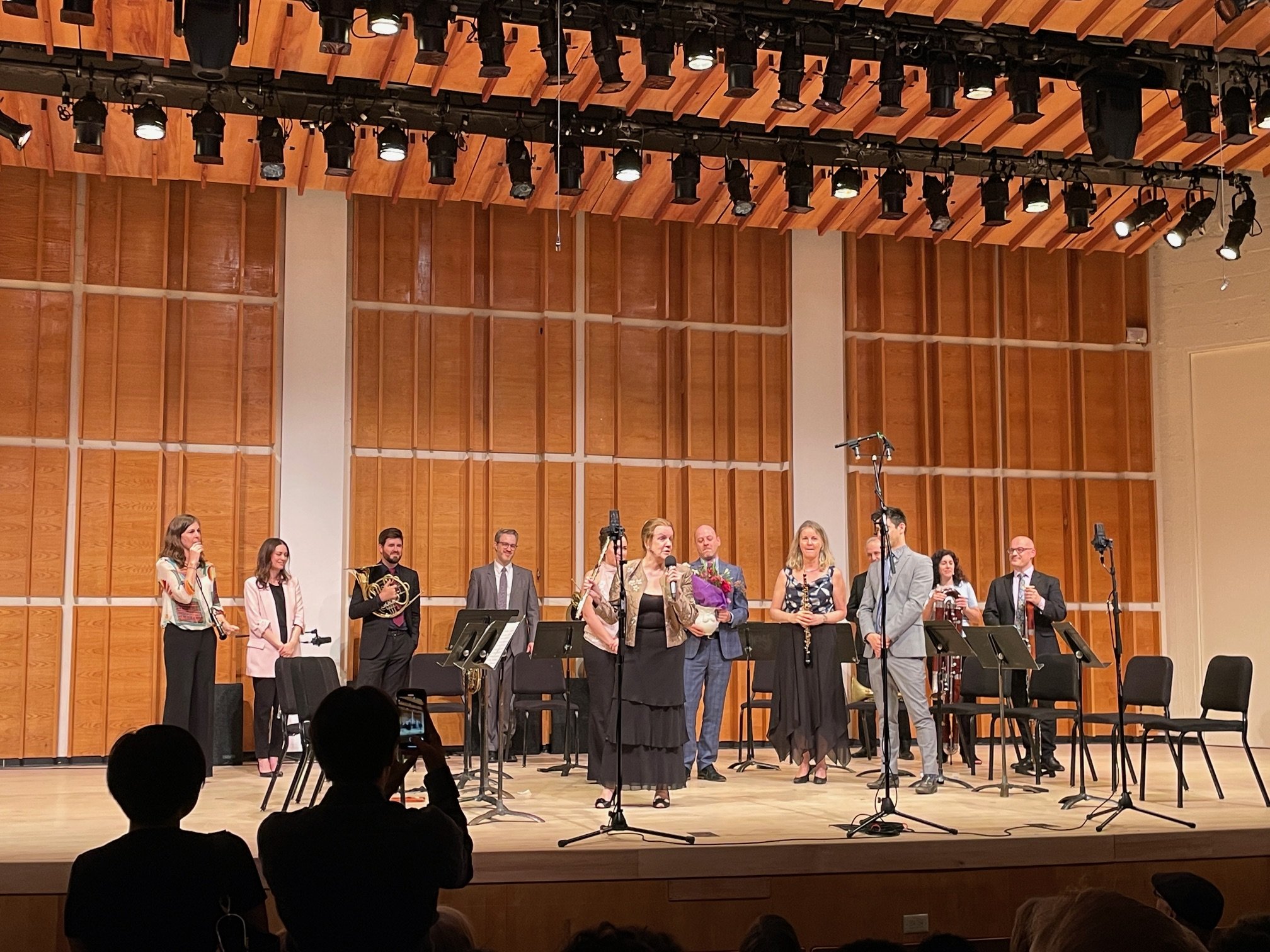REVIEW: The Sylvan Winds Among Friends
Above, the Sylvan Winds. Photo by Brian Hatton.
The Sylvan Winds concluded their forty-fifth season as one of New York’s premiere woodwind quintets with a convivial, festive concert at Merkin Concert Hall. Joined by a mixture of friends and former ensemble members, the evening featured fresh new works, as well as beloved classics, and expanded into veritable wind ensemble literature, building to thirteen players. Would that be a “baker’s duodecet?”
The concert teemed with positive vibes, and was both a salute to Artistic Director and founding member flutist Svjetlana Kabalin, and a celebration of the power and importance of chamber music. Valerie Coleman’s Umoja warmly welcomed music lovers. Former member and founder of Imani Winds, Coleman knows her way around the woodwind quintet, and Umoja, which takes its name from the Swahili word for “unity,” and originated as a piece for women’s choir to sing for Kwanzaa gives each of the woodwind players their turn with the tune. Umoja begins with a minimalism-influenced tapestry and paints it with a hummable, call-and-answer dialogue of motifs that conjure images from rodeos to jazz.
Mozart’s Serenade No. 12 in C Minor, K. 388, requires eight players — 2 oboes, 2 clarinets, 2 bassoons and 2 horns — and the resulting octet’s tight-knit camaraderie appeared effortless. Each player contributed crisply rhythmic articulation and impeccably rounded intonation. But not only did they sound good — each player boasting a fully-fleshed soloistic personality — the interpretation was keenly plotted, wisely paced, and dynamically balanced.
No composer exposes nitty-gritty details like Mozart, and Sylvan Winds passed his tests with flying colors, clearly scrupulous, such as in the Menuetto — syncopated and imitative, the echo always matching the initial statement. They also vary the timbral color palette with virtuosic control of their embouchures.
Following intermission, Elizabeth Brown introduced her 2021 composition Pentalogue, which provided a variety of fresh textures and colors for the quintet to draw upon, and betrays the existential ennui faced by the composer, indeed anyone who works in the performing arts, at the onset of the COVID pandemic. In five accessible movements, utilizing imaginative techniques, noodl-y textures and burbling tremelandos, the music was absorbing, bizarrely interweaving quotes from Mahler and, delightfully, if inexplicably, “Three Blind Mice.”
Sylvan Winds at Merkin Hall.
The evening’s apex was a refined and spirited performance of Richard Strauss’s Suite in B-flat Major, Op. 4, for thirteen players from 1884. Strauss conducted the premiere, but no conductor needed here — Sylvan Winds, even supplemented more than twice over, delivered a tight, lithe performance that emphasized the vitality and energy in Strauss’s four movement score.
Following the dramatic journey of the finale, “Introduction and Fugue,” Kabalin spoke in gratitude, and with a heartfelt sentiment on the importance of chamber music: “It matters.”
Svjetlana Kabalin and the Sylvan Winds at Merkin Hall.







